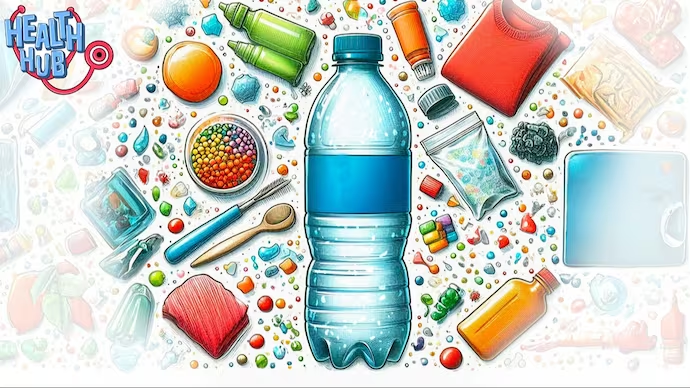Free Courses Sale ends Soon, Get It Now


Free Courses Sale ends Soon, Get It Now



Copyright infringement not intended
Picture Courtesy: https://www.indiatoday.in/health/story/hiding-in-plain-sight-the-unseen-world-of-nanoplastic-in-your-bottled-water-2488727-2024-01-15
Context: Recent scientific investigations are revealing the potential harm caused by nanoplastics in breast milk and cells.
Details
Key Highlights of the Study
About Nanoplastics
|
Aspect |
Explanation |
|
Definition |
Nanoplastics refer to plastic particles with dimensions in the nanometer range (typically less than 100 nm). They can be primary (originating at this size) or result from the breakdown of larger plastics. |
|
Sources |
Primary Nanoplastics: Manufactured at the nanoscale for specific purposes. Secondary Nanoplastics: Result from the breakdown of larger plastic items due to environmental factors (e.g., UV radiation, mechanical stress). |
|
Environmental Presence |
Found in various environmental compartments, including water bodies (oceans, rivers, lakes), soil, air, and even in organisms. They are challenging to detect and monitor due to their size. |
|
Formation Mechanisms |
Fragmentation: Larger plastic items break down into smaller particles. Abrasion: Mechanical wear and tear of plastic items. Manufacturing Processes: Some are intentionally produced at the nanoscale. |
|
Chemical Composition |
Nanoplastics retain the chemical composition of the original plastic material from which they originate. This composition can vary widely depending on the type of plastic. |
|
Transport in the Environment |
Due to their small size, nanoplastics can be transported over long distances by air and water currents, leading to widespread distribution. |
|
Environmental Impact |
Ecological Impact: Potential harm to aquatic life and ecosystems. Human Health Concerns: Uncertainties exist regarding the health effects of nanoplastic exposure. |
|
Methods of Detection |
Detection methods include spectroscopy, microscopy (electron microscopy, atomic force microscopy), and emerging techniques like Raman spectroscopy. Detection is challenging due to their small size. |
|
Regulatory Status |
Currently, there are limited specific regulations addressing nanoplastics. However, there is growing awareness, and research is being conducted to understand their impact, which may influence future regulations. |
|
Mitigation Strategies |
Reducing Plastic Use: Minimizing the input of plastics into the environment. Improved Waste Management: Proper disposal and recycling of plastic items. Research on Innovative Solutions: Developing technologies to capture and remove nanoplastics. |
Must Read Articles:
Nanoplastic Pollution: https://www.iasgyan.in/daily-current-affairs/nanoplastic-pollution#:~:text=Nanoplastics%20are%20tiny%20plastic%20particles,the%20nanoscale%20for%20specific%20applications.
|
PRACTICE QUESTION Q. Which of the following statements about the health risks of nanoplastics is MOST accurate? A) Nanoplastics can easily pass through cell membranes and cause widespread organ damage. B) The health risks of nanoplastics are well-understood and pose a significant threat to human health. C) The potential health risks of nanoplastics are still being investigated, and more research is needed. D) Nanoplastics are too small to interact with human cells and pose no health risks. Answer: C Explanation: While research is ongoing, the full extent of the health risks posed by nanoplastics is still unknown. Option (C) is the most accurate, acknowledging the need for further study. |
© 2024 iasgyan. All right reserved